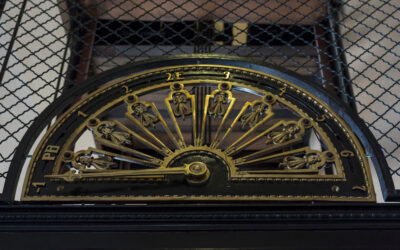When we think of the coldest places in the universe, we typically imagine the far reaches of space, distant from the warmth of stars. However, the coldest spot in the universe is actually right here on Earth, buried beneath the border between France and Switzerland. This icy location is found within the Large Hadron Collider (LHC), the world’s most powerful particle accelerator, operated by CERN (the European Organization for Nuclear Research).
The LHC, located near Geneva, Switzerland, is a 27-kilometer (17-mile) circular tunnel buried deep underground. This enormous facility is famous for groundbreaking scientific experiments, particularly its role in the discovery of the Higgs boson in 2012. But aside from its scientific achievements, the LHC is notable for reaching temperatures colder than the vacuum of space.
Outer space, while freezing by human standards, averages around -270°C (about 3 Kelvin) above absolute zero. However, the LHC’s superconducting magnets are cooled to an astonishing -271.3°C (1.9 Kelvin), which is even closer to absolute zero—the theoretical point at which all molecular motion ceases. These frigid conditions are necessary for the LHC’s magnets to function properly.
The reason the LHC operates at such extreme cold temperatures is due to the use of superconducting magnets, which are vital for guiding particles through the collider. Superconductors are materials that, when cooled to very low temperatures, can conduct electricity with zero resistance. This makes them highly efficient for creating the powerful magnetic fields needed to steer high-energy particles around the LHC’s ring at nearly the speed of light.
To achieve this ultra-cold environment, the LHC is equipped with a massive cryogenic system, one of the largest in the world. Liquid helium is used to cool the magnets to their operating temperature. Maintaining this level of cold is no small feat, and it’s essential for the LHC to carry out its high-precision particle collisions.
The extreme cold is one of the reasons why the LHC can push the boundaries of modern physics, allowing scientists to recreate conditions that existed just moments after the Big Bang. These experiments help researchers explore fundamental questions about the nature of matter, energy, and the universe itself.
So, while we may think of the vast, dark cosmos as the coldest place imaginable, the coldest spot known to us is actually right here on Earth, under the rolling hills of the France-Switzerland border, in the pursuit of unlocking the secrets of the universe!
Related Articles
The History of Elevators—Lifting the World to New Heights
Elevators have been around for thousands of years—even the ancient Romans had pulley-based lifts. But the invention of the safety elevator in 1852 by Elisha Otis revolutionized modern cities. Otis’...
The Origins of Popcorn—A Snack with Ancient Roots
Popcorn has been popping up in history for thousands of years! The oldest popcorn ever discovered—over 5,600 years old—was found in a cave in New Mexico, proving that ancient civilizations enjoyed...
The Science of Fireflies—Nature’s Living Lanterns
Fireflies, also known as lightning bugs, are one of nature’s most magical sights. But their glow isn’t just for show—it’s a complex form of bioluminescence used for communication. Inside a firefly’s...





